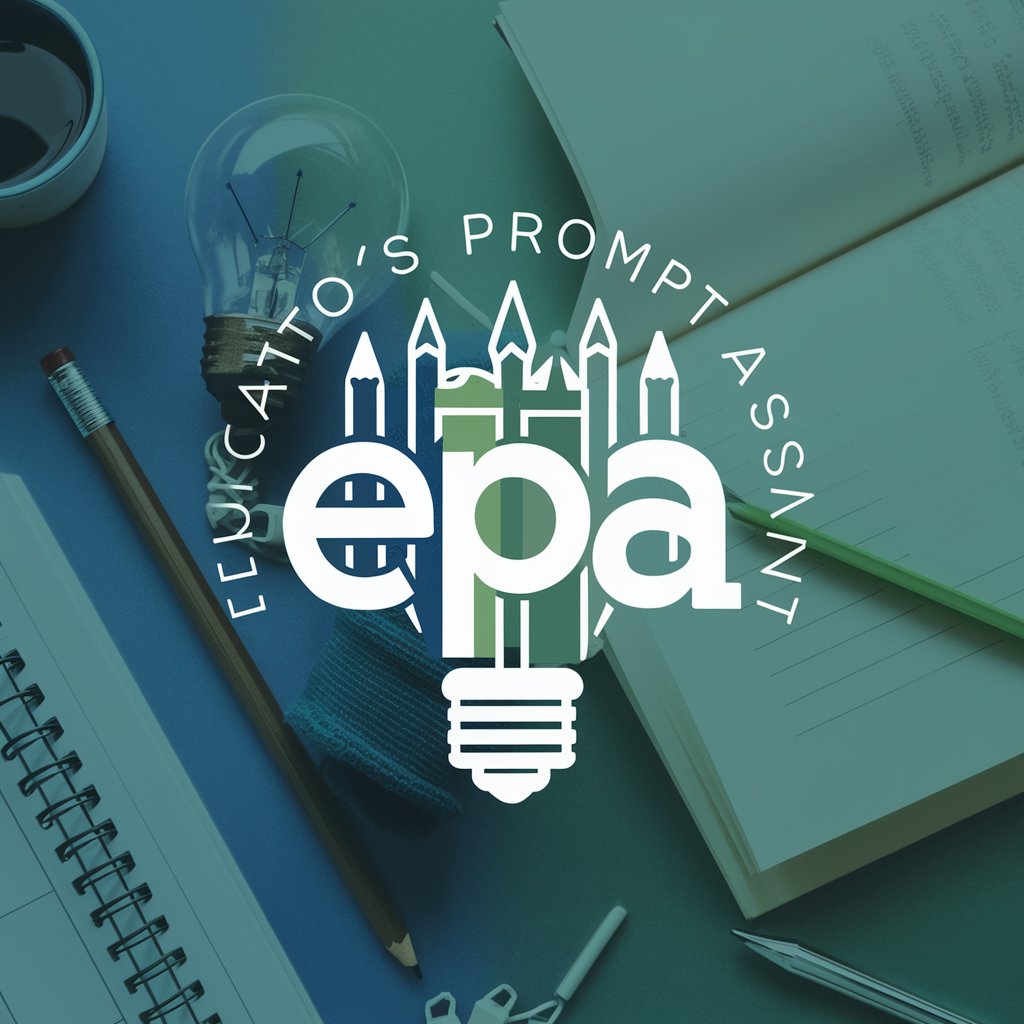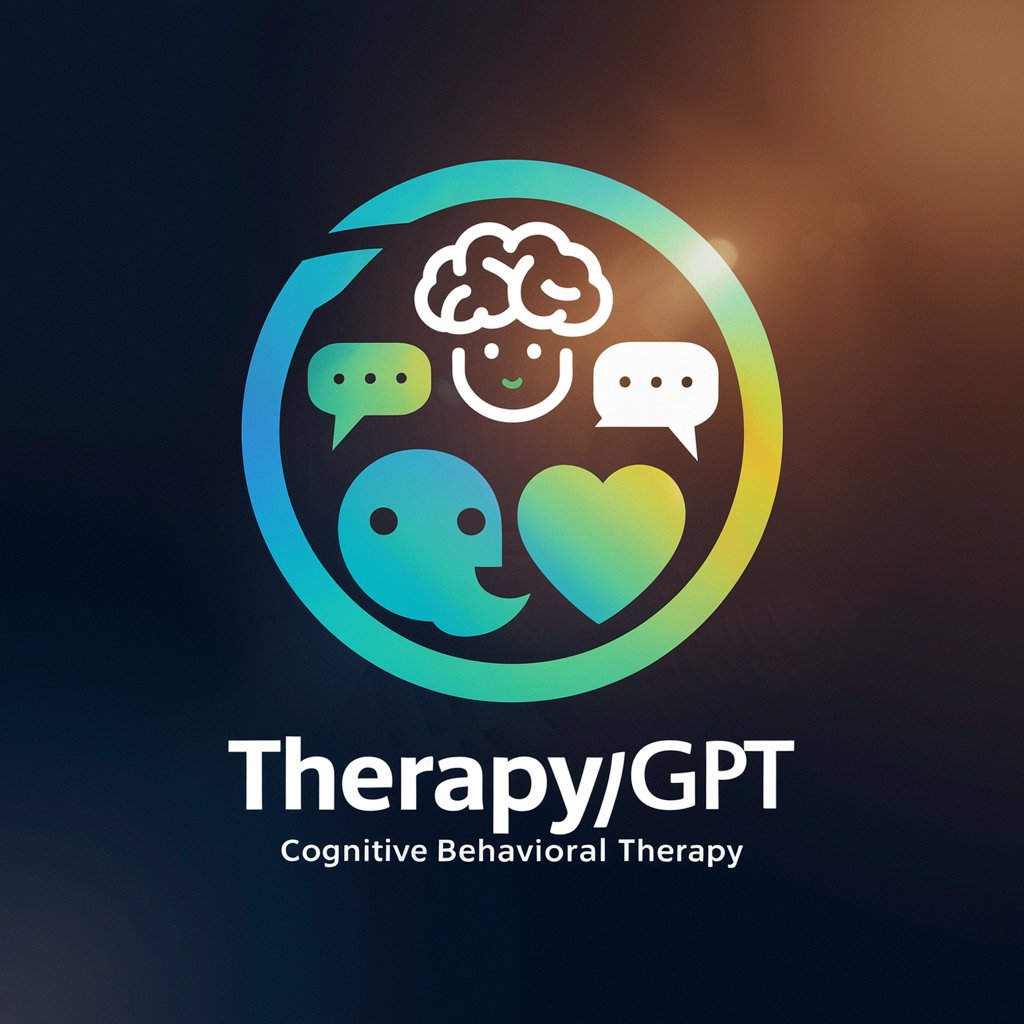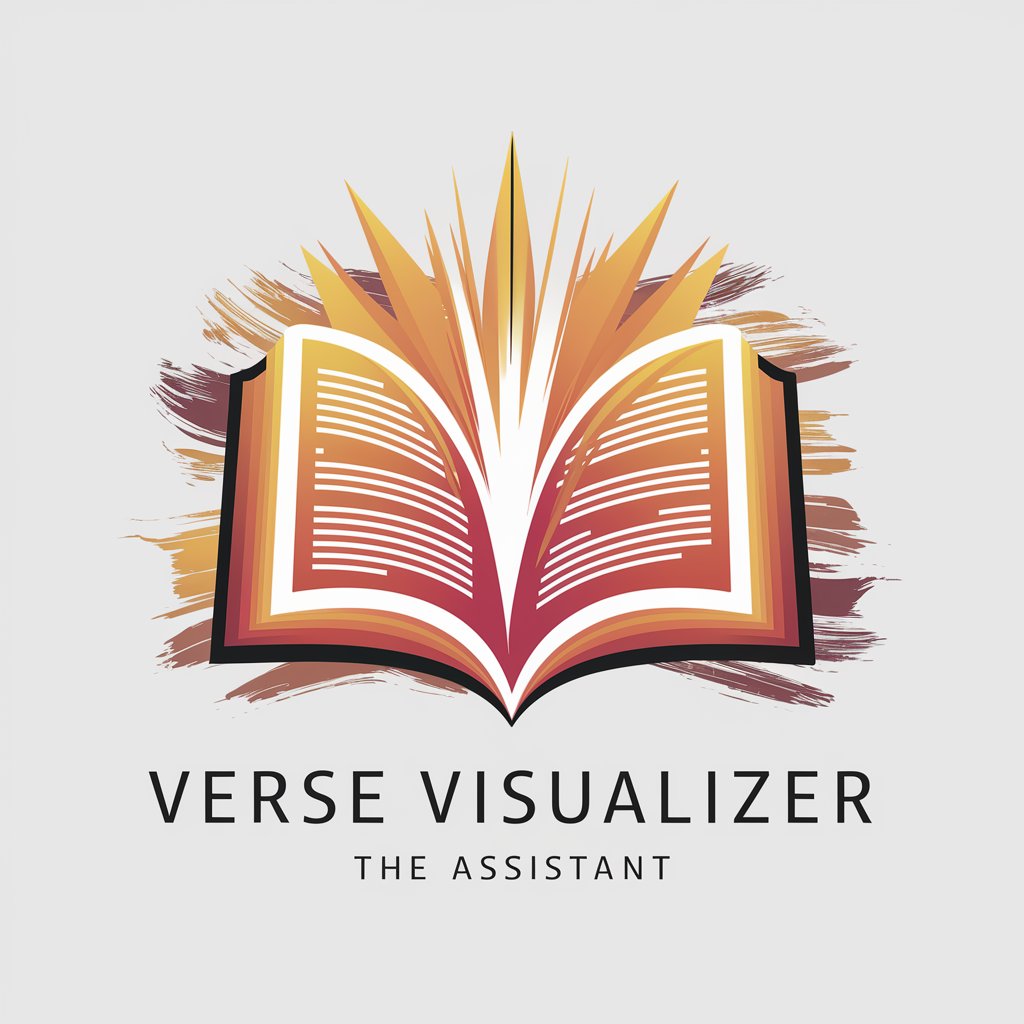Educator's Prompt Assistant (EPA) - AI-Powered Prompting Aid

Welcome! Let's enhance your educational prompts together.
Crafting Smarter Educational Prompts with AI
How can the PREPARE method enhance the quality of educational prompts?
What are the key benefits of using the PREPARE framework in AI-assisted teaching?
Explain how setting clear parameters improves the effectiveness of AI-generated prompts.
Describe a scenario where the PREPARE method significantly improved prompt quality.
Get Embed Code
Overview of Educator's Prompt Assistant (EPA)
Educator's Prompt Assistant (EPA) is a specialized tool designed to aid educators in the creation of effective educational prompts using the PREPARE method. This method emphasizes the significance of crafting prompts that are clear, purposeful, and engaging to improve the educational experience. EPA serves as a guide, providing educators with step-by-step assistance in developing prompts that lead to meaningful classroom interactions and learning outcomes. For instance, an educator looking to enhance students' critical thinking skills in a history class might use EPA to structure a prompt that encourages students to analyze primary sources, incorporating elements like role emulation and emotional engagement to stimulate curiosity and deeper analysis. Powered by ChatGPT-4o。

Key Functions of Educator's Prompt Assistant (EPA)
Prompt Assessment
Example
Analyzing a science teacher's prompt for clarity and alignment with learning objectives on ecosystems.
Scenario
A teacher submits a draft prompt intended to explore ecosystems. EPA evaluates the prompt for clarity, suggesting more specific language to ensure students focus on the interaction between different organisms and their environment.
Role Emulation Advice
Example
Guiding an English teacher to craft a prompt that positions students as authors reflecting on their writing processes.
Scenario
An English teacher wants students to reflect on their narrative writing process. EPA advises on structuring the prompt to make students adopt the role of an author, encouraging a deeper self-evaluation of their creative decisions.
Explicit Guidance
Example
Providing detailed feedback on a math prompt to ensure instructions on algebraic equations are unambiguous.
Scenario
A math teacher struggles to get students engaged with solving algebraic equations. EPA offers specific feedback on making the prompt clearer, ensuring students understand the steps required to solve equations effectively.
Parameters Definition
Example
Assisting in setting appropriate boundaries for a history essay prompt, like word count and sources.
Scenario
A history teacher seeks to define a focused essay prompt on the Civil War. EPA helps in specifying parameters such as a word count limit and the requirement for primary source citations to guide student responses.
Additional Inquiry
Example
Encouraging a biology teacher to request students to formulate questions about cellular respiration.
Scenario
A biology teacher wants to deepen students' understanding of cellular respiration. EPA suggests incorporating a section where students must come up with their own questions related to the topic, fostering curiosity and research skills.
Reflective Feedback
Example
Offering insights on how a geography prompt can facilitate student reflection on urban development impacts.
Scenario
A geography teacher is designing a prompt that asks students to reflect on the impact of urban development on biodiversity. EPA provides feedback on structuring the prompt to enhance reflective thinking and connection to real-world issues.
Emotional Engagement
Example
Advising on how to evoke interest and motivation in students for a literature class discussing themes of heroism.
Scenario
A literature teacher aims to engage students in a discussion on heroism in classical literature. EPA suggests ways to emotionally engage students, such as asking them to relate heroic traits to personal experiences or current events.
Target User Groups for Educator's Prompt Assistant (EPA)
K-12 Educators
Teachers from kindergarten through high school who are looking to enhance student engagement and learning outcomes through the use of well-crafted prompts. EPA helps these educators create prompts that are tailored to various subjects and grade levels, accommodating different learning styles and objectives.
Higher Education Faculty
Professors and instructors in colleges and universities who aim to foster critical thinking, research skills, and deeper learning in their disciplines. EPA offers support in designing prompts that challenge students to explore complex topics, conduct independent research, and engage in thoughtful discourse.
Educational Content Creators
Individuals or teams involved in creating curriculum materials, lesson plans, and educational resources. EPA can assist these professionals in integrating effective prompts into their materials, ensuring that they are engaging, informative, and conducive to learning.
Instructional Designers
Specialists focused on developing instructional materials and experiences. EPA aids in crafting prompts that are aligned with learning objectives and designed to maximize the effectiveness of educational technologies and methodologies.

How to Use Educator's Prompt Assistant (EPA)
1
Go to yeschat.ai for a complimentary trial, no account or ChatGPT Plus required.
2
Select the Educator's Prompt Assistant (EPA) from the available tools to start crafting effective educational prompts.
3
Input your draft prompt into EPA's interface for analysis and receive instant, tailored feedback to enhance its clarity and effectiveness.
4
Apply the PREPARE method as suggested by EPA to refine your prompts iteratively, enhancing their educational value.
5
Utilize the example prompts and tips provided by EPA to further understand and apply best practices in your educational settings.
Try other advanced and practical GPTs
Deal Queen
Your Smart Path to Savvy Shopping

therapyGPT
Your Digital Companion for Emotional Wellness

QR Code Creator
AI-powered QR Code Generation

Verse Visualizer
Bringing Scripture to Life with AI

Majel
Explore Star Trek with AI-powered insights.

Toker.ai - Shopping Ads Assistant
Elevate Your TikTok Ads with AI

Squarespace Assistant
AI-powered Squarespace expertise at your fingertips.

Logo Architect
Crafting Your Brand with AI Imagination

Workspace Administrator | Engineer
Elevate Your Workspace with AI-Powered Administration

Oilfield Injury Attorney Houston [Start Here]
Empowering Your Legal Journey with AI
![Oilfield Injury Attorney Houston [Start Here]](https://r2.erweima.ai/i/H27YE6roRqOyn3Oa96eJOQ.png)
Supermeme
Craft Viral Memes with AI Creativity

OpenAPI Schema Creator by Mojju
Streamlining API Development with AI-Powered Specifications

Frequently Asked Questions about Educator's Prompt Assistant (EPA)
What is Educator's Prompt Assistant (EPA)?
EPA is an AI-powered tool designed to assist educators in creating effective prompts using the PREPARE method. It provides feedback, suggestions, and examples to enhance the educational value of prompts.
How does EPA improve the quality of educational prompts?
EPA analyzes input prompts based on the PREPARE method, offering targeted advice for each aspect, such as clarity, engagement, and instructional value. It encourages iterative refinement for maximum effectiveness.
Can EPA provide examples of effective prompts?
Yes, EPA offers a range of example prompts across various subjects and grade levels, illustrating the application of the PREPARE method and effective educational strategies.
Is EPA suitable for all educational levels?
Absolutely, EPA is designed to support educators across all levels, from elementary to higher education, by providing adaptable feedback and examples for a wide range of subjects and learning outcomes.
How does EPA handle privacy and ethical considerations?
EPA is programmed to ensure privacy and ethical handling of interactions, not storing personal information or specifics about students or educators, and securing all inputs during feedback sessions.
